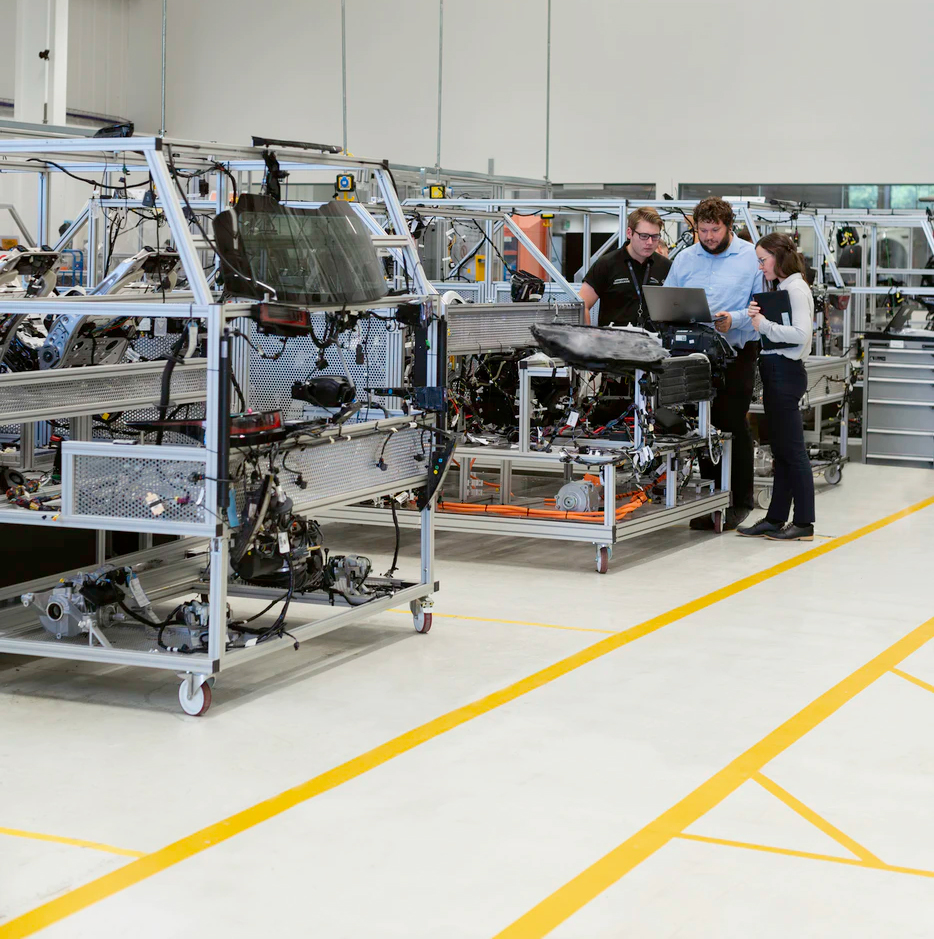Turning exhaust gases into electricity, an innovative prototype
Jean-Paul Viricelle, a researcher in process engineering at Mines Saint-Étienne, has created a small high-temperature fuel cell composed of a single chamber. Placed at the exhaust outlet of the combustion process, this prototype could be used to convert unburned gas into energy.
Following the government’s recent announcements about the hydrogen industry, fuel cells are in the spotlight in the energy sector. Their promise is that they could help decarbonize industry and transportation. While hydrogen fuel cells are the stars of the moment, research on technologies of the future is also playing an important role. At Mines Saint-Étienne[1], Jean-Paul Viricelle has developed a new high-temperature fuel cell – over 600°C – called a mono-chamber. It is unique in that it can be fueled not only by hydrogen, but by a mixture of more complex gases, representative of the real mixtures at the exhaust outlet of a combustion process. “The idea is not to compete with a conventional hydrogen fuel cell, since we’ll never reach the same yield, but to recover energy from the mixtures of unburned gas at the outlet of any combustion process,” explains the researcher, who specializes in developing chemical sensors.
This would help reduce the amount of gaseous waste resulting from combustion. These compounds also contribute to air pollution. For example, unburned hydrocarbons could be recovered, cleaned and oxidized to generate electricity. Why hydrocarbons? Because they are composed of carbon and hydrogen atoms, the fuel of choice for conventional fuel cells. One of the most advanced studies on the concept of mono-chamber cells was published in 2007 by Japanese researchers who recovered a gaseous mixture at the exhaust outlet of a scooter engine. Even though it was not very powerful, the experiment proved the feasibility of such a system. Jean-Paul Viricelle has created a prototype that seeks to improve this concept. It uses a synthetic gaseous mixture, which is closer to the real composition of exhaust gases. It also optimizes the fuel cell’s architecture and materials to enhance its performance.
The inner workings of the cell
A fuel cell consists of three components: two electrodes, which are hermetically separated by an electrolyte. It is fueled by a gas (hydrogen) and air. Once inside the cell, an electrochemical reaction occurs at each electrode. This results in the exchange of electrons, which generates the electricity supplied by the cell. The architecture of conventional cells is often constrained, which prevents them from being reduced in size. To overcome these obstacles, Jean-Paul Viricelle has opted for a mono-chamber cell, composed of a single compartment. In this concept, hydrogen cannot be directly used as a fuel since it is too reactive when it comes into contact with air and could blow up the device! That’s why the researcher fuels it with a gaseous mixture of hydrocarbons and air. What does this new structure change compared to a conventional cell? “The electrolyte no longer acts like a seal, as it does in a conventional cell, and serves only as an ionic conductor. But the cathode, and the anode come into contact with all the reactants. So they must be perfectly selective so that they only react with one of the gases,” explains Jean-Paul Viricelle.
In practice, a synthetic exhaust gas is sent over the cell. The electrochemical reaction that follows is standard: an oxidation at the anode and a reduction at the cathode generate electricity. This cell works at a high temperature (over 600°C), a condition that is essential for the electrolyte to transport the electrons. And, since the gas mixture that fuels the cell gives off heat, a small enough cell could be self-sustaining in terms of heat. This means that once it has been initiated by an eternal heat source, it would become self-sufficient in terms of heat. Moreover, laboratory tests have shown a power density equivalent to that of conventional cells. However, significant gas flows must be sent over this demonstrator that measures 4 cm² with a low energy conversion rate as a result. Stacking mono-chamber cells, rather than a single cell, as is the case for this prototype, could help resolve this problem.
A wide range of applications
For now, markets are more conducive to low-temperature fuel cells in order to prevent the devices from overheating. Nevertheless, the concept developed by Jean-Paul Viricelle presents a number of benefits. It opens the door to new geometries for placing two electrodes on the same surface. Such design flexibility facilitates a move towards miniaturization. Small high-temperature fuel cells could, for example, fuel industrial microreactors. The cells could also be integrated at the exhaust outlet of an engine to convert unburned hydrocarbons into electricity, as in the Japanese experiment. In this case, the energy recovered would power electronic devices and other sensors within the vehicle. More broadly, this energy conversion device could help respond to efficiency issues for any combustion system, including power plants. Despite all this, mono-chamber fuel cells remain concepts that have not made their way out of research laboratories. Why is this? Up to now, there has been a greater focus on hydrogen production than on energy recovery.
By Anaïs Culot.
[1] Jean-Paul Viricelle is the director of the Georges Friedel Laboratory, a joint research unit between Mines Saint-Étienne and CNRS.













Leave a Reply
Want to join the discussion?Feel free to contribute!